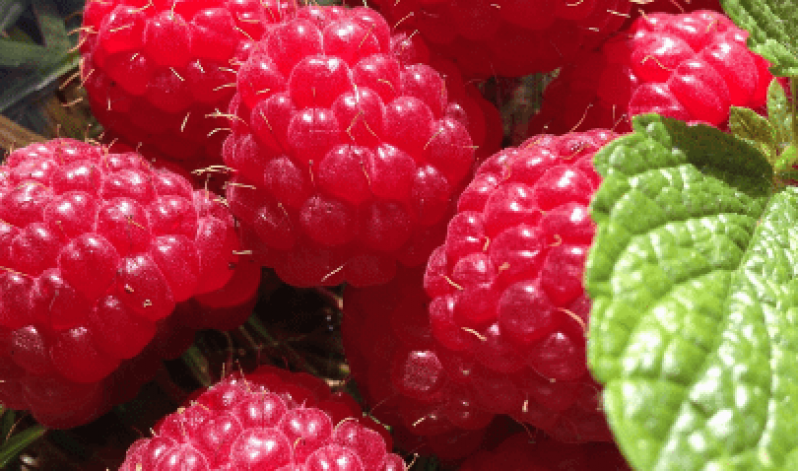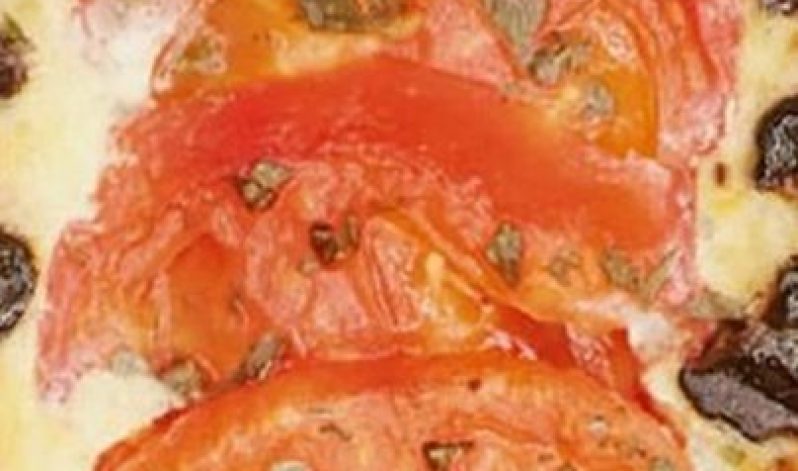Jul 12, 2022
0 comment
Dig into a home-grown raspberry tiramisu
There’s nothing quite like home-grown raspberries, which is why we’ve put together some top tips on how to grow them, plus a delicious recipe from the BBC Good Food Magazine, as seen at the BBC Good Food Show Summer…
If you’ve already planted raspberries, now is about the time they’ll be ready for picking, washing and preparing for the kitchen, whether its a handful of the berries on your cereal, or in a tantalising dessert. With some help from our friends at BBC Gardeners’ World Magazine, we’ve put together some top tips on growing raspberries, accompanied by a delicious raspberry tiramisu recipe from the BBC Good Food Show Magazine, demonstrated at the BBC Good Food Show this summer by Cassie Best on the Italian Kitchen.
Planting
In late autumn, or early winter, plant raspberry canes in a sunny spot 45cm apart with 1.8m between rows, in well-drained soil. Before planting, soak the roots in water, and cover the roots with about 5cm of soil. Keep any white buds at the stem base at soil level. In springtime, feed the canes with a general fertiliser and use mulch to keep the roots moist.
Summer-fruiting raspberriesThese raspberries fruit after a year. Prune out weak shoots as they develop an tie in new canes with a spacing of 15cm. After fruiting, cut the canes that have produced fruit to soil level. Summer-fruiting canes need a bit more support, so tie them as the grow.
/*! elementor - v3.19.0 - 07-02-2024 */
.elementor-widget-image{text-align:center}.elementor-widget-image a{display:inline-block}.elementor-widget-image a img[src$=".svg"]{width:48px}.elementor-widget-image img{vertical-align:middle;display:inline-block}
Autumn-fruiting raspberriesThese raspberries produce canes that flower and fruit the same year. Cut down the canes in the winter to allow new ones to develop in a wide row the following year. Once shorter, the canes will be able to support each other.
Tips for pests and diseasesUse netting to protect the fruit from birds and other small mammalsSometimes raspberry plants suffer from rasperry nutrient deficiency – use a high nitorgen fertiliser and mulch annually to prevent this.You might spot green shield bugs on your plants – these won’t harm your plants so don’t worry about them!
Harvesting and what to do nextPick the fruit gently to avoid crushing them. Ripe raspberries will tumble off the plant into your hands.For delicious results, pick and eat our raspberries on the same day.Raspberries can be stored in the fridge, or frozen in a dish to be eaten later.You can also make your harvest into a delicious jam, purée, or smoothie.
Feeling inspired? Why not try making a refreshing raspberry tiramisu, using Cassie Best’s berrylicious recipe, as seen at the BBC Good Food Show Summer at the 2022 Show. Find out more below…
/*! elementor - v3.19.0 - 07-02-2024 */
.elementor-widget-divider{--divider-border-style:none;--divider-border-width:1px;--divider-color:#0c0d0e;--divider-icon-size:20px;--divider-element-spacing:10px;--divider-pattern-height:24px;--divider-pattern-size:20px;--divider-pattern-url:none;--divider-pattern-repeat:repeat-x}.elementor-widget-divider .elementor-divider{display:flex}.elementor-widget-divider .elementor-divider__text{font-size:15px;line-height:1;max-width:95%}.elementor-widget-divider .elementor-divider__element{margin:0 var(--divider-element-spacing);flex-shrink:0}.elementor-widget-divider .elementor-icon{font-size:var(--divider-icon-size)}.elementor-widget-divider .elementor-divider-separator{display:flex;margin:0;direction:ltr}.elementor-widget-divider--view-line_icon .elementor-divider-separator,.elementor-widget-divider--view-line_text .elementor-divider-separator{align-items:center}.elementor-widget-divider--view-line_icon .elementor-divider-separator:after,.elementor-widget-divider--view-line_icon .elementor-divider-separator:before,.elementor-widget-divider--view-line_text .elementor-divider-separator:after,.elementor-widget-divider--view-line_text .elementor-divider-separator:before{display:block;content:"";border-block-end:0;flex-grow:1;border-block-start:var(--divider-border-width) var(--divider-border-style) var(--divider-color)}.elementor-widget-divider--element-align-left .elementor-divider .elementor-divider-separator>.elementor-divider__svg:first-of-type{flex-grow:0;flex-shrink:100}.elementor-widget-divider--element-align-left .elementor-divider-separator:before{content:none}.elementor-widget-divider--element-align-left .elementor-divider__element{margin-left:0}.elementor-widget-divider--element-align-right .elementor-divider .elementor-divider-separator>.elementor-divider__svg:last-of-type{flex-grow:0;flex-shrink:100}.elementor-widget-divider--element-align-right .elementor-divider-separator:after{content:none}.elementor-widget-divider--element-align-right .elementor-divider__element{margin-right:0}.elementor-widget-divider--element-align-start .elementor-divider .elementor-divider-separator>.elementor-divider__svg:first-of-type{flex-grow:0;flex-shrink:100}.elementor-widget-divider--element-align-start .elementor-divider-separator:before{content:none}.elementor-widget-divider--element-align-start .elementor-divider__element{margin-inline-start:0}.elementor-widget-divider--element-align-end .elementor-divider .elementor-divider-separator>.elementor-divider__svg:last-of-type{flex-grow:0;flex-shrink:100}.elementor-widget-divider--element-align-end .elementor-divider-separator:after{content:none}.elementor-widget-divider--element-align-end .elementor-divider__element{margin-inline-end:0}.elementor-widget-divider:not(.elementor-widget-divider--view-line_text):not(.elementor-widget-divider--view-line_icon) .elementor-divider-separator{border-block-start:var(--divider-border-width) var(--divider-border-style) var(--divider-color)}.elementor-widget-divider--separator-type-pattern{--divider-border-style:none}.elementor-widget-divider--separator-type-pattern.elementor-widget-divider--view-line .elementor-divider-separator,.elementor-widget-divider--separator-type-pattern:not(.elementor-widget-divider--view-line) .elementor-divider-separator:after,.elementor-widget-divider--separator-type-pattern:not(.elementor-widget-divider--view-line) .elementor-divider-separator:before,.elementor-widget-divider--separator-type-pattern:not([class*=elementor-widget-divider--view]) .elementor-divider-separator{width:100%;min-height:var(--divider-pattern-height);-webkit-mask-size:var(--divider-pattern-size) 100%;mask-size:var(--divider-pattern-size) 100%;-webkit-mask-repeat:var(--divider-pattern-repeat);mask-repeat:var(--divider-pattern-repeat);background-color:var(--divider-color);-webkit-mask-image:var(--divider-pattern-url);mask-image:var(--divider-pattern-url)}.elementor-widget-divider--no-spacing{--divider-pattern-size:auto}.elementor-widget-divider--bg-round{--divider-pattern-repeat:round}.rtl .elementor-widget-divider .elementor-divider__text{direction:rtl}.e-con-inner>.elementor-widget-divider,.e-con>.elementor-widget-divider{width:var(--container-widget-width,100%);--flex-grow:var(--container-widget-flex-grow)}
Raspberry tiramisuThis recipe is from BBC Good Food Magazine, as seen on the Italian Kitchen at the BBC Good Food Show Summer with Cassie Best.Serves 66 egg yolks175g caster sugar300ml pot double cream500g mascarpone1 tbsp vanilla extract24 sponge fingers150ml marsala or sweet wine350g raspberriesicing sugar, to dust
Method
1.Put the egg yolks and sugar into a heatproof bowl, set over a pan of simmering water. Whisk until pale, creamy and doubled in volume. Remove from the heat and whisk for 1 minute until cool.2.In another bowl beat the cream, marsala and vanilla extract until combined, thick and creamy. Fold or very gently whisk this mixture into the creamy yolks.3.Dip half the sponge fingers into the marsala and arrange over the bottom of a serving dish. Pour over half of the creamy mixture, then top with most of the raspberries. Repeat the layers, then finish by dotting over the remaining raspberries. Cover and chill for at least 2 hours.4.Dust the tiramisu with icing sugar just before serving in big bowls.
BBC Gardeners’ World Live will be back alongside the BBC Good Food Show Summer from 15-18 June 2023. Find out more below…
Delve into garden inspiration from the 2022 Show Gardens and Beautiful Borders
Find out more about the BBC Good Food Show Summer

